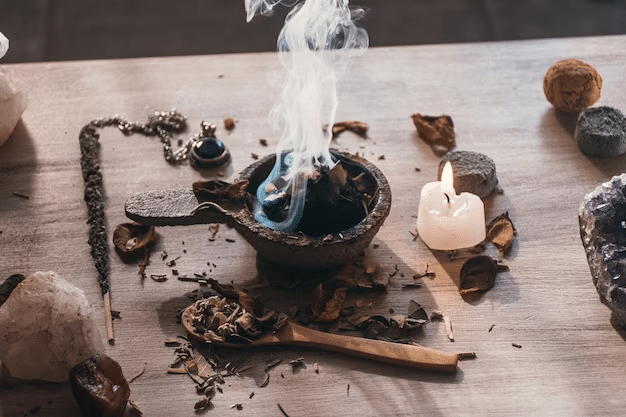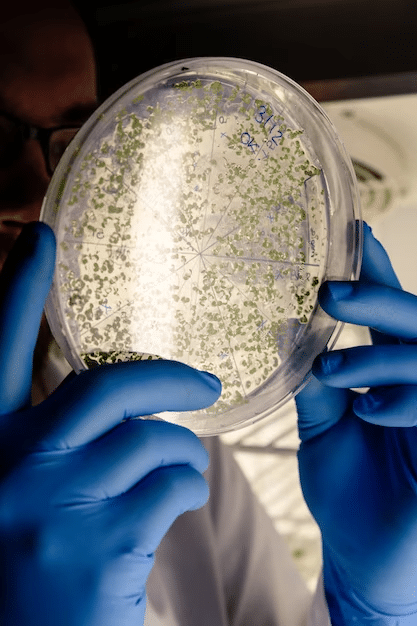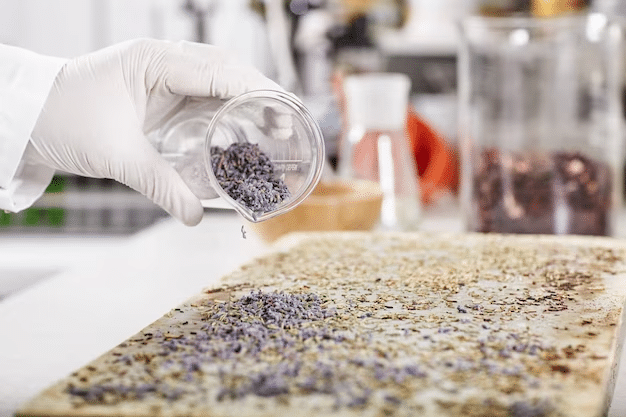There are many misconceptions related to does burning sage kills bacteria. Continue reading the article to get to know the sage smudging and bacterial control.
Many societies have used herbs and plants throughout history for their alleged medicinal and cleansing abilities. Sage is a fascinating and respected botanical plant known for its culinary applications and beyond its culinary significance. Burning sage often referred to as “sage smudging,” has been a longstanding ritual in many indigenous and spiritual traditions. Many believe that this technique clears areas of bad energy, encourages spiritual clarity, and may have potential health benefits.
The ability of burning sage to eliminate bacteria and diseases in the air has come under scrutiny recently. Investigating the scientific basis of this practice is crucial at a time when cleanliness and hygiene hold paramount importance. Let’s explore its significance.
Table of Contents
Everything you need to know about burning sage
Sage burning, a time-honored ritual, purifies spaces and symbolizes spiritual practices worldwide. To cleanse and purify the environment physically and spiritually, people burn dried sage leaves. What you should know about burning sage is as follows:
- 1. Significance:
Sage smudging is historically and culturally significant, rooted in indigenous traditions, especially native Americans and First Nations. Diverse cultures worldwide, including Africa and Asia, use herbal remedies that serve similar purposes. - Purification and cleansing:
The primary purpose of burning sage is to cleanse and purify a space or person. It clears negative energy, allowing for a fresh start and positive vibes to enter the space.
- Ritual process:
To perform a sage smudging ritual, gather dried sage leaves, typically white or desert sage, tied with string. The lit sage bundle smolders, emitting smoke after a brief burn before extinguishing, appealing to all. Wave the smoldering sage bundle in the desired area or around a person, making sure the smoke reaches all corners. To direct smoke, people commonly employ a feather or their hand as a guiding tool.
- Health benefits:
Many proponents of sage smudging claim that it can have health benefits. Some people think it can help with headaches, allergies, and respiratory disorders symptoms. We need more studies to substantiate some claims in studies that suggest burning sage can clean the air by reducing airborne germs.
- Spiritual and ritual uses:
People often use sage smudging before or during spiritual or sacred rituals to create a sacred and pure space. They also use it for personal meditation or reflection to clear the mind and enhance focus.
- Practical uses:
People burn sage not only for its spiritual and ceremonial purposes but also to purify the air and eliminate household odors. Additionally, it’s sometimes used in feng shui practices to harmonize energy in a living space.
- Ethical considerations:
It’s essential to use ethically sourced and harvested sage to respect indigenous cultural traditions and protect endangered plant species.
Some indigenous communities and activists have raised concerns about cultural appropriation, so it’s crucial to be respectful and informed.
- Safety precautions:
When using sage, always be cautious about fire safety. Make sure to completely extinguish the smoldering sage bundle after using it. Keep windows and doors open for ventilation when smudging indoors.
Burning sage is a cross-cultural practice that cleanses and purifies spaces and individuals. Smudging with sage, a centuries-old tradition, remains relevant today for spirituality, health, and personal choices. Respect sage smudging’s cultural and spiritual significance, despite debated health claims, with consideration for its origins.
What is the purpose of burning sage?
The purpose of burning sage, often referred to as “sage smudging,” can vary depending on the cultural, spiritual, or personal context in which individuals use it. The primary purposes of burning sage include:
- Cleansing and purification: Cleaning and purifying a space or a person is one of the most popular and fundamental uses of sage smudging.
- Spiritual rituals: Sage smudging is a common practice in spiritual and ceremonial rituals for establishing a sacred or consecrated space. It is used before or during rituals, meditation, or ceremonies to enhance the spiritual experience.
- Clearing negative energy: Many people use sage smudging to clear away negative thoughts, emotions, or energy from their own being.
- Air purification: Some individuals use sage smudging as a natural air purifier. There is a notion that sage burning can aid in lowering airborne infections and bacteria, thereby resulting in a cleaner and more hygienic environment.
- Meditation and mindfulness: Sage burning can be used in a mindfulness or meditation routine. The act of smudging can help clear the mind and create a calm and focused environment for meditation.
- Feng Shui and space harmonization: Sage smudging is sometimes incorporated into feng shui practices to balance the energy, or “chi,” within a living space. It is believed to promote harmony and positive energy flow in the environment.
- Personal preferences: Some people burn sage simply because they enjoy the aroma, find it soothing, or appreciate the ritualistic aspect of the practice.
It’s important to note that the specific beliefs and reasons for using sage smudging can vary widely among different cultures, spiritual traditions, and individuals. While some find empirical benefits in sage smudging, it remains primarily a matter of personal and spiritual belief, and its effectiveness in achieving its intended purposes may differ from person to person.
Burning sage and bacteria
Burning sage, or sage smudging, has been traditionally used for its purported ability to cleanse and purify spaces both spiritually and physically. Some people believe that burning sage can help reduce or eliminate bacteria in the air. While this idea has gained attention, it’s essential to understand the limitations and scientific evidence behind the practice:
- Limited Scientific evidence: There is limited scientific research on the antimicrobial properties of sage smoke. According to research, the smoke produced when sage is burned has the ability to lessen airborne microorganisms. Although further research is required to determine the extent of sage’s usefulness, these findings are frequently used to support the notion that it can kill bacteria.
- Variability in efficacy: Depending on the type of sage used, how long it is smudged for, and the particular bacteria present, sage smudging’s capacity to reduce airborne bacteria can vary. A place cannot be completely sterilized or disinfected with this technique.
- Alternative techniques: Sanitizing and disinfecting indoor environments can be accomplished using techniques that are more dependable and efficient than sage smudging, despite the fact that it may have some antimicrobial benefits. Common practices such as using disinfectants, improving ventilation, and maintaining good hygiene remain the primary means of reducing bacteria and pathogens.
- Cultural and spiritual significance: It’s important to respect the cultural and spiritual significance of sage smudging. For many, the practice holds deeper meaning and is a way to connect with their heritage or spirituality. While the antimicrobial aspect is interesting, it is not the sole or even the most important purpose of sage smudging for many practitioners.
When it comes to practical hygiene and sanitation, established methods are generally more reliable.
Does burning sage kill bacteria?
Sage has been burned to purportedly kill bacteria, but it’s vital to realize that there is scant and unreliable scientific data to back up this claim. There isn’t conclusive proof that burning sage is a dependable or effective way to get rid of bacteria, despite some research claiming that the smoke produced during sage smudging may have antibacterial characteristics.
Sage smoke’s antibacterial qualities may be related to the components that are released during burning, including phenolic and volatile organic compounds. These substances could be able to somewhat suppress airborne microorganisms. However, depending on the type of sage used, the length of time spent smudging, and the particular bacteria, the efficacy may differ.
A spiritual and cultural practice
It’s crucial to remember that sage smudging is primarily a spiritual and cultural practice. Any potential health benefits, such as a reduction in bacteria, should be considered within the broader context of the tradition’s significance. For practical sanitation and hygiene, tried-and-true methods like using disinfectants, practicing good hygiene, and ensuring proper ventilation are more reliable ways to reduce germs and pathogens in indoor environments.
Although some evidence suggests that sage burning may have antimicrobial properties, its effectiveness in eliminating bacteria has not been well tested. Therefore, it should not be relied upon as the primary method for sanitation or disinfection.
Is burning sage bad for your lungs?
Burning sage, like other types of incense or smoke-producing practices, can potentially have some negative effects on lung health, especially if done excessively or in poorly ventilated spaces. Here are some considerations:
- Particulate matter: Burning sage or other herbs causes particulate matter to be released into the air. If you already have lung diseases, allergies, or asthma, inhaling these particles may irritate your respiratory system.
- Smoke and irritants: Sage smudging produces smoke that contains a number of chemicals and volatile organic compounds that can irritate the respiratory system. Coughing, throat discomfort, or shortness of breath could result from this.
- Ventilation: Sage must be burned with adequate ventilation in order to lower smoke concentrations and potential effects on indoor air quality. Smoke accumulation brought on by insufficient ventilation might be hazardous to your lungs.
- Individual sensitivity: Different people may react differently to smoke and particulate matter. You may be more susceptible to the respiratory effects of burning sage if you have a history of lung issues or are especially sensitive to environmental irritants.
- Moderation: Sage smudging should be used sparingly and in an environment with enough airflow to reduce the risk of respiratory discomfort. It would be preferable to stop the practice if you started to suffer any uncomfortable respiratory symptoms.
- Alternative strategies: If lung health is a problem for you, you can think about utilizing alternative cleaning or purifying strategies, such as employing essential oil diffusers, air purifiers, or conventional cleaning and ventilation methods.
Health risks of burning sage
While burning sage, or sage smudging, is a practice with cultural and spiritual significance, there are some potential health risks and considerations associated with it:
- Respiratory irritation: The smoke produced during sage smudging contains particulate matter and volatile organic compounds, which can irritate the respiratory system. Prolonged or repeated exposure to the smoke may lead to coughing, throat irritation, or exacerbate pre existing respiratory conditions.
- Allergies: Some individuals may be allergic to sage or other herbs used in smudging. Inhaling the smoke can trigger allergic reactions, leading to symptoms like sneezing, runny nose, or skin rashes.
- Asthma: People with asthma or other respiratory conditions may be particularly sensitive to the smoke and should exercise caution when engaging in sage smudging, ensuring proper ventilation and monitoring their symptoms.
- Fire hazards: The act of burning sage involves an open flame, which poses a fire hazard if not used safely. It is crucial to follow fire safety precautions to avoid accidental fires.
- Carbon monoxide: While the carbon monoxide produced during smudging is generally minimal, it’s important to ensure adequate ventilation to prevent the buildup of this colorless, odorless gas, which can be harmful in high concentrations.
- Cultural appropriation: Using sage without understanding its cultural significance or origin can be culturally insensitive or appropriative. It is essential to approach the practice with respect and awareness of its cultural context.
- Overuse: Excessive or prolonged smudging can lead to indoor air pollution and an overbearing scent, which may be uncomfortable for some individuals.
- Ethical considerations: The sourcing of sage is also an ethical concern, as overharvesting can deplete native plant populations. It is important to use ethically sourced and sustainably harvested sage.
To minimize health risks and ensure a safe and respectful practice, consider the following precautions:
- Use sage smudging in moderation.
- Ensure good ventilation by opening windows and doors.
- Be mindful of the presence of individuals with respiratory conditions.
- Respect the cultural and spiritual significance of the practice and its origins.
- Use fire safety measures, such as having a container for the burning sage and a source of water nearby.
What are the pros and cons of using burning sage to kill bacteria?
Here’s a table outlining the pros and cons of using burning sage to kill bacteria:
| Pros of Burning Sage for Bacteria | Cons of Burning Sage for Bacteria |
| 1. Natural and traditional practice: Burning sage is a centuries-old cultural and spiritual practice that carries deep cultural and historical significance. | 1. Limited Scientific evidence: The scientific evidence supporting the antimicrobial properties of sage smoke is limited and inconclusive. |
| 2. Potential air purification: Some studies suggest that sage smoke may reduce airborne bacteria and pathogens, contributing to cleaner indoor air. | 2. Variable effectiveness: The effectiveness of sage smudging in killing bacteria can vary depending on factors like the type of sage, duration, and specific bacteria present. |
| 3. Aromatherapy: The aroma of burning sage can have a calming and soothing effect on individuals, promoting relaxation and stress reduction. | 3. Respiratory irritation: The smoke produced during sage smudging can irritate the respiratory system, potentially causing coughing or throat discomfort, especially in sensitive individuals. |
| 4. Cultural and spiritual significance: Many individuals find personal and spiritual meaning in the practice of sage smudging, which can enhance their overall well-being. | 4. Ethical considerations: The overharvesting of sage and its unsustainable sourcing can have negative environmental and cultural impacts. |
| 5. Ritual and mindfulness: Sage smudging can be a mindfulness or meditation practice, helping individuals clear their minds and create a focused environment. | 5. Fire hazard: The use of an open flame during smudging poses a fire risk if not used safely. |
| 6. Low cost: Sage is relatively inexpensive and readily available for those who wish to use it for smudging. | 6. Cultural appropriation: Using sage without understanding its cultural significance or origin can be culturally insensitive. |
| 7. Easy to use: Sage smudging is a simple practice that requires minimal equipment or expertise. | 7. Overuse concerns: Excessive or prolonged smudging can lead to indoor air pollution and an overbearing scent. |
| 8. Aesthetic appeal: Many people find the visual and sensory aspects of sage smudging aesthetically pleasing and calming. | 8. Carbon monoxide: While minimal, the combustion of sage can produce small amounts of carbon monoxide, which can be harmful in poorly ventilated spaces. |
Alternative methods for sanitation and hygiene should also be taken into account when addressing bacterial concerns in indoor environments.
Conclusion
In conclusion, the practice of burning sage, commonly known as sage smudging, has garnered interest recently, especially regarding its potential antibacterial properties. This practice, deeply embedded in various cultures and spiritual traditions, carries both historical and cultural significance. However, scientific evidence supporting its antibacterial effects remains scant and inconclusive.
Additionally, burning sage raises potential health and ethical considerations. The smoke produced can irritate the respiratory system, particularly for those with preexisting conditions. Ethical concerns about the sourcing and sustainability of sage highlight the importance of responsible usage. Reliable methods of hygiene, sanitation, and indoor air quality maintenance remain the most effective ways to address bacterial concerns in indoor environments.







